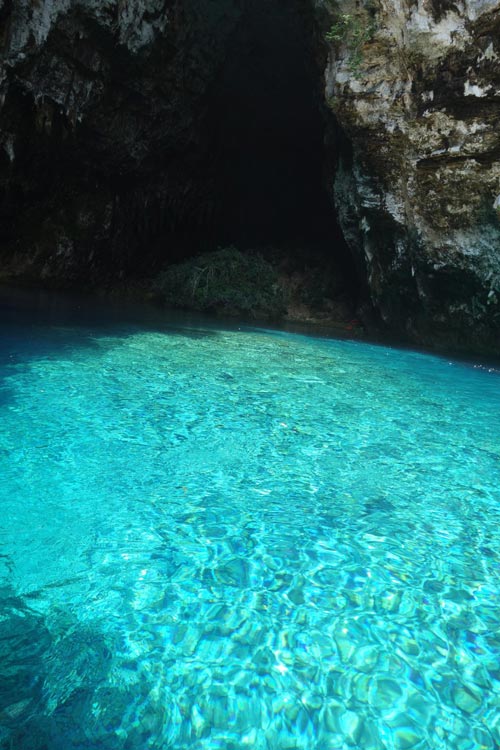Discovery of sunlight-driven organic chemistry on water surfaces

Light on the air-sea interface. This material relates to a paper that appeared in the 12 August 2016, issue of Science, published by AAAS. The paper, by S. Rossignol at Université Lyon in Villeurbanne, France, and colleagues was titled, "Atmospheric photochemistry at a fatty acid-coated air-water interface." Credit: Christian George, CNRS-IRCELYON
Conventional wisdom holds that carboxylic acids and saturated fatty acids, which are abundant throughout the environment, only react with hydroxyl radicals and are not affected by sunlight.
However, these previous conclusions are based on observations of the molecules in a gas phase, or dissolved in solution. Here, Stéphanie Rossignol and colleagues studied nonanoic acid (NA) during a liquid-gas phase, as the molecules interact with surface water.
When the researchers studied NA along the surface of a liquid while it was exposed to UV light, they observed the formation of organic compounds.
They conducted a series of experiments to adjust for possible contamination, concluding that NA is indeed responsible for the observed photochemistry resulting in these compounds.
Based on the type of photochemistry observed, the authors say that similar reactions may be common to all carboxylic acid molecules.
Considering how common fatty acids are in the environment, such photochemical processing on aerosols or other aqueous sites could have a significant impact on local ozone and particle formation, the authors say.
In a related Perspective, Veronica Vaida notes that these previously unappreciated secondary organic products “will affect secondary organic aerosol mass, composition, and optical properties, in turn defining the particle's overall effect on climate, air quality, and health.”
Media Contact
All latest news from the category: Life Sciences and Chemistry
Articles and reports from the Life Sciences and chemistry area deal with applied and basic research into modern biology, chemistry and human medicine.
Valuable information can be found on a range of life sciences fields including bacteriology, biochemistry, bionics, bioinformatics, biophysics, biotechnology, genetics, geobotany, human biology, marine biology, microbiology, molecular biology, cellular biology, zoology, bioinorganic chemistry, microchemistry and environmental chemistry.
Newest articles

Trotting robots reveal emergence of animal gait transitions
A four-legged robot trained with machine learning by EPFL researchers has learned to avoid falls by spontaneously switching between walking, trotting, and pronking – a milestone for roboticists as well…

Innovation promises to prevent power pole-top fires
Engineers in Australia have found a new way to make power-pole insulators resistant to fire and electrical sparking, promising to prevent dangerous pole-top fires and reduce blackouts. Pole-top fires pose…

Possible alternative to antibiotics produced by bacteria
Antibacterial substance from staphylococci discovered with new mechanism of action against natural competitors. Many bacteria produce substances to gain an advantage over competitors in their highly competitive natural environment. Researchers…





















